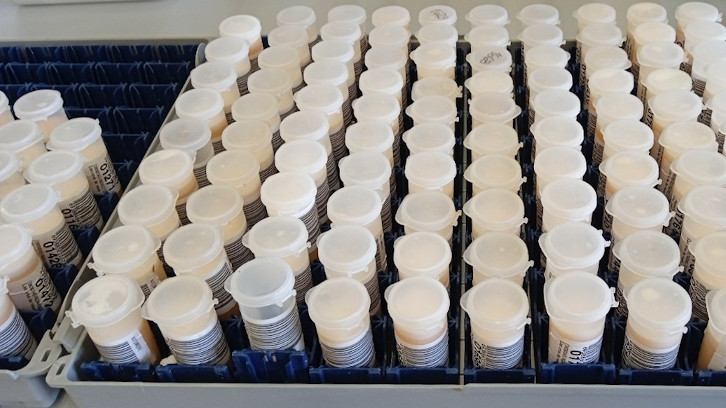A2 milk, a quick method to ensure its authenticity

A study carried out by researchers from the Department of Animal and Food Science of the Faculty of Veterinary Medicine of the UAB, has revealed significant advances in the application of infrared spectroscopy technology to distinguish between A1 and A2 cow milk. These advances represent a significant step towards better quality control and transparency in the dairy industry.
Milk primarily contains two types of proteins: caseins and whey proteins. In cow’s milk, caseins make up around 80%, and among them, the called β-caseins account for 25 to 35% of the total caseins. Based on the amino acid found at position 67 of β-casein, we can classify it as type A1 or type A2. For β-casein A1, this position is filled up by histidine, while in β-casein A2, we find proline. This small difference leads to a distinct β-casein metabolism, resulting in the release of different compounds during digestion, including a protein compound called beta-casomorphin-7, associated with digestive disorders such as discomfort or stomach heaviness. The amount of beta-casomorphin-7 produced is much higher in the A1 variant than in the A2 variant.
Nowadays, there is a wide variety of milk types available in supermarkets, including A2 milk, which has gained popularity among consumers as a healthier alternative to conventional A1 milk. The first thing we need to know is that A2 milk contains only the genetic variant β-casein A2, while A1 milk may contain only the genetic variant A1 or a mixture of A1 and A2.
From the consumer’s and the dairy industry's perspective, it would be interesting to have rapid methods that allow discrimination between A1 and A2 milk, to verify the authenticity of products or raw materials acquired without using genetic tests. Infrared spectroscopy technology is considered a fast, objective, non-destructive method for analyzing samples. It is free from chemical reagents, cost-effective, and environmentally friendly. This technology is already used routinely in the dairy industry to determine milk quality (fat, protein and lactose) and is presented as a technology capable of detecting food adulteration.
Within the ‘A2 Milk’ project funded by the Ministry of Science and Innovation, our team has evaluated the potential of this technique to discriminate between A1 and A2 milk, using several predictive models developed in the Department of Animal Science and Food at the Faculty of Veterinary Medicine at the UAB. The results that we obtained indicate that the composition of both types of milk presented similar values for fat, protein, and lactose. Additionally, the potential of infrared spectroscopy to accurately distinguish between A1 and A2 milk has revealed promising results for its application as a control method. However, we advise further research to enhance these predictive models.
Norma S. Navarro; Elena Albanell; Carmen L. Manuelian
Department of Animal and Food Science
Universitat Autònoma de Barcelona
normanavarroh1810@gmail.com; elena.albanell@uab.cat; carmen.manuelian@uab.cat
References
Norma S. Navarro, Elena Albanell, Massimo De Marchi & Carmen L. Manuelian (2024). An attempt to identify milk protein fraction genotypes using unsupervised and supervised near-infrared spectroscopy methods, Italian Journal of Animal Science, 23:1, 313-319, DOI: 10.1080/1828051X.2024.2314157

